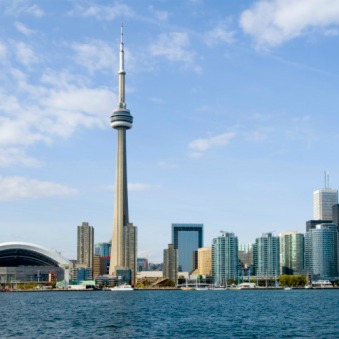 When it comes to engaging the community and eliciting public support, Liberal Party hopeful Glen Murray says Ontario wind energy developers have done a poor job. In fact, he tells NAW that the resistance that developers are encountering is largely self-inflicted.
When it comes to engaging the community and eliciting public support, Liberal Party hopeful Glen Murray says Ontario wind energy developers have done a poor job. In fact, he tells NAW that the resistance that developers are encountering is largely self-inflicted.
‘When you build these kinds of projects, there are real consequences,’ he says. ‘Some of these wind projects are not good matches because they don't fit the community profile.’
Murray is among several Liberal Party candidates vying to replace Dalton McGuinty, who resigned from the post unexpectedly in October. Among Murray's challengers are Sandra Puppatello, former cabinet minister; Kathleen Wynne, member of the provincial party (MPP) for Don Valley West; and Gerard Kennedy, who served as minister of education from 2003 to 2006.
The Liberal Party will elect its next leader – and the premier of Ontario – the weekend of Jan. 25-27 in Toronto.
However, because the Liberal Party fell a seat short of a majority government in the last election, rival political parties – such as the Progressive Conservative Party and the New Democratic Party – can force an election by filing a "vote of no confidence" with the parliament. Therefore, the victorious Liberal Party candidate may not hold the position for very long.
Murray is the former mayor of Winnipeg, Manitoba, as well as the current Toronto Center MPP – a seat previously occupied by former Minister of Energy and Infrastructure George Smitherman, who was one of the driving forces behind the Green Energy Act (GEA) that helped usher in North America's first feed-in tariff (FIT).
While the GEA – and by extension, the FIT – will have helped Ontario surpass 2 GW of installed wind energy capacity by the end of this year, several facets of the act have been controversial. For instance, critics say the GEA's implementation has moved too slowly for wind developers and that it is costly to ratepayers.
Another chief criticism of the GEA is that the McGuinty government took the control over energy planning – including wind power development – away from municipalities, some of which opposed wind energy.
Community energy planning
For his part, Murray vows to take the province in another direction when it comes to communities and making decisions about energy planning. He wants to let communities, rather than the government, make decisions about energy, including those for wind power.
Murray's proposal calls for community energy planning – he would amend the Ontario Power Authority's mandate to require local governments to get involved early in the process of deciding what kinds of energy projects are needed and where they should be located.
‘The same way that we trust our cities and towns to make decisions about water systems, sewers, transportation and planned land use, we need to put energy decisions in the middle of an integrated plan,’ he says.
Too often, Murray explains, energy decisions are now made by distant agencies within the provincial government.
‘With community energy planning, we could avoid many of the difficulties that have come before, when the right decisions were made eventually but after conflict, cost and delay," he says. "The system we have now is broken, but we can fix it.’
‘Community involvement comes in after the decisions are made,’ Murray adds. ‘This can lead to unhappy communities and bad decisions, and it opens the door for the opposition to launch destructive campaigns.’
Murray recommends that each community's energy profile be mapped out by examining usage, demand and costs before looking at specific types of generation.
‘Once that is determined," he says, "then the community can choose [a technology] based on the lowest cost, cleanliness or other factors.’
Murray cites TransAlta's 44 MW Castle River wind farm as an example of a project that had successful community engagement. The output from the wind farm, which began as a single turbine in 1997, supplies Calgary's C-train, which is part of the city's Light Rail Transit (LRT) system.
‘In that instance, studies showed that wind power was the right choice, because it matched the energy demand of the LRT,’ he says. ‘We haven't done anything like that in Ontario.’
Murray's comments certainly got the attention of the Canadian Wind Energy Association (CanWEA), which has made community engagement and the social acceptance of wind power its top strategic priorities for the next three years.
Responding to Murray's claims, Chris Forrest, CanWEA's vice president of communications and public affairs, says, ‘I can assure you that responsible local engagement with communities is the top priority of the wind industry in Ontario and across the country.’
‘While wind energy has proved to be a subject of debate in some communities, there are many examples of wind energy projects in Ontario that have broad community support,’ Forrest says. ‘Wind energy is delivering a rapidly growing amount of clean and affordable power to the Ontario grid while also driving very real benefits to communities, landowners, local contractors and service providers.’
Although there are regulatory requirements with respect to community engagement and consultation, Forrest says CanWEA's members follow ‘a mandate of responsible development and continuous improvement in working with citizens and local officials and strive to exceed regulatory expectations when possible.’
Further, Forrest points to the wind industry's first-ever Best Practices for Community Engagement and Public Consultation, which are now being adopted in other jurisdictions.
‘CanWEA also continues to offer cutting-edge training programs to help ensure our members are sharing best practices and developing new skills,’ he adds.



